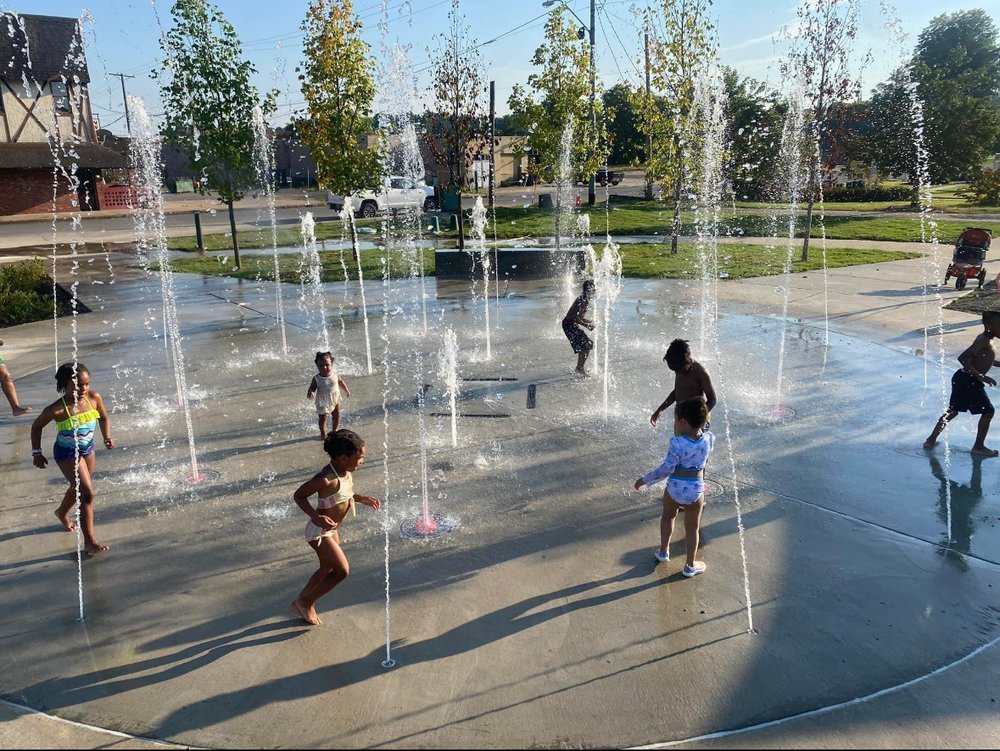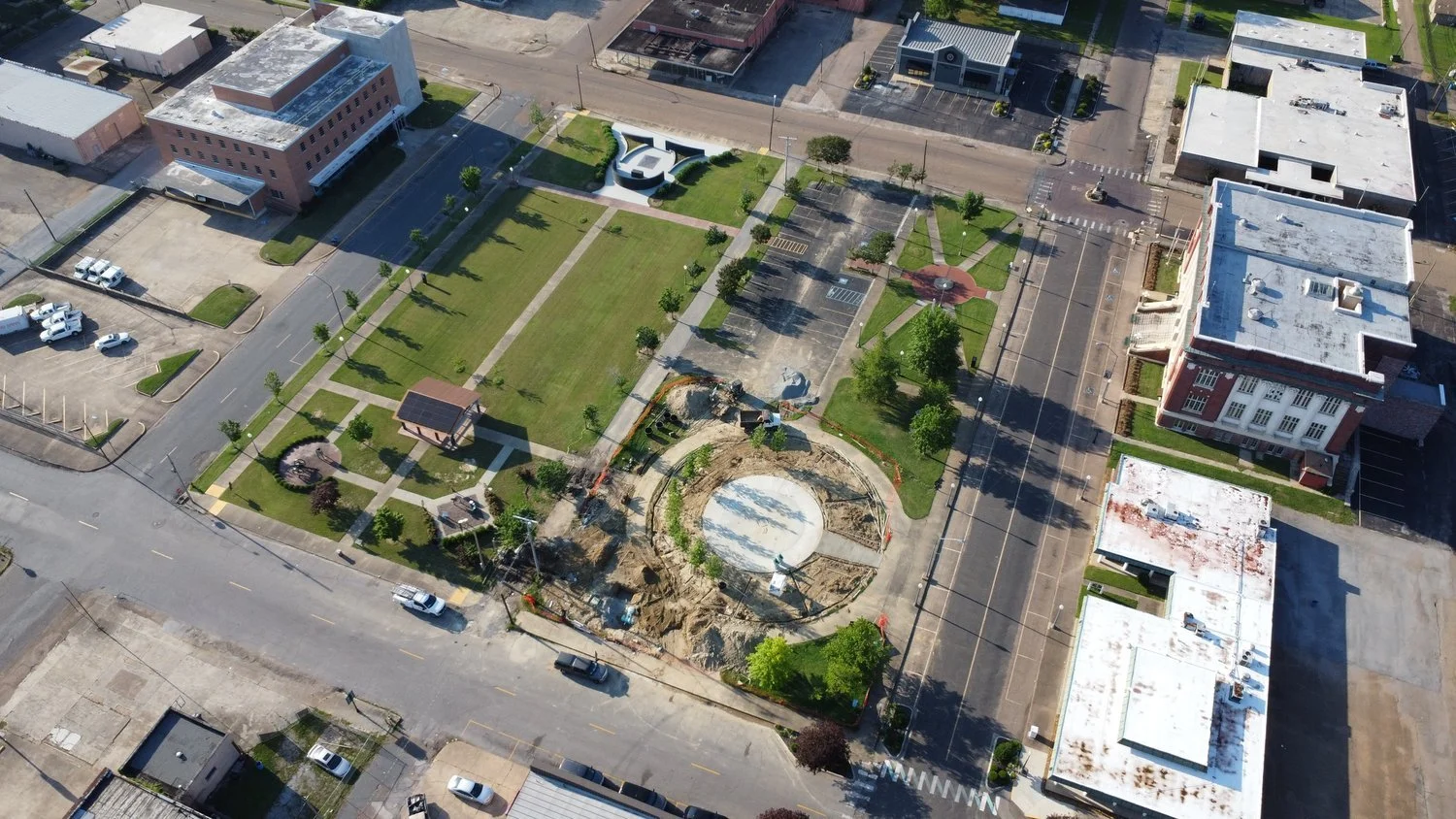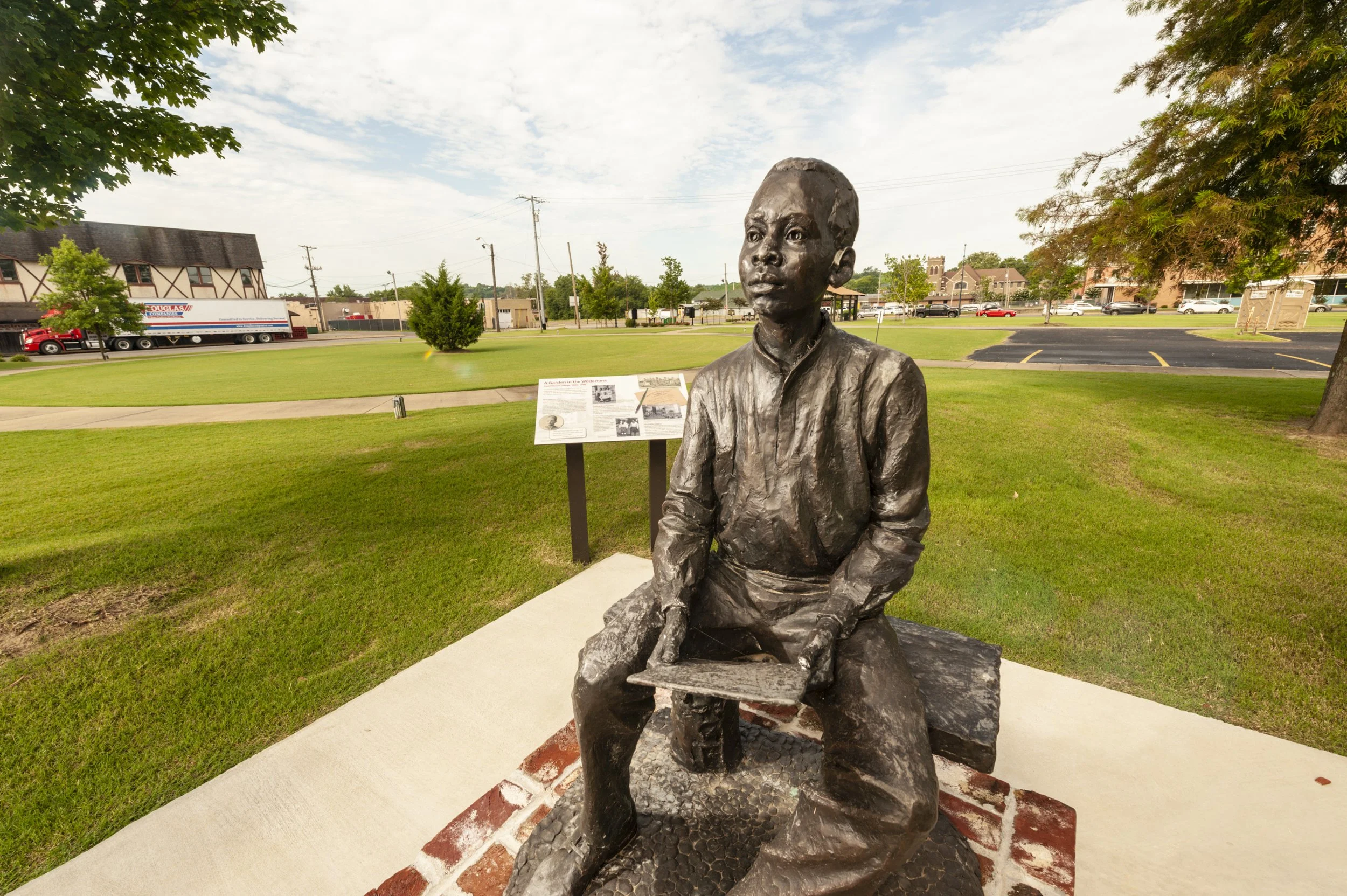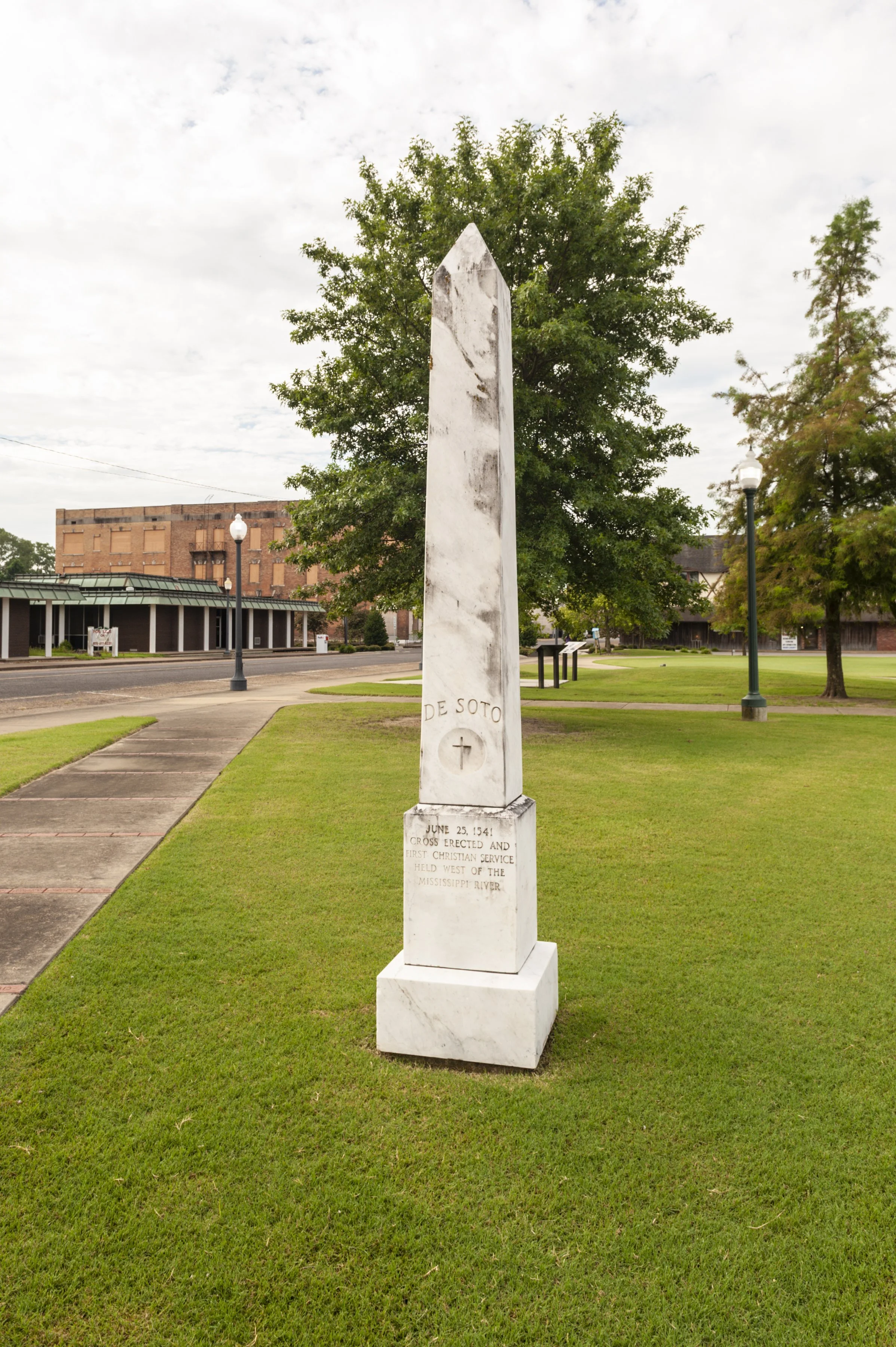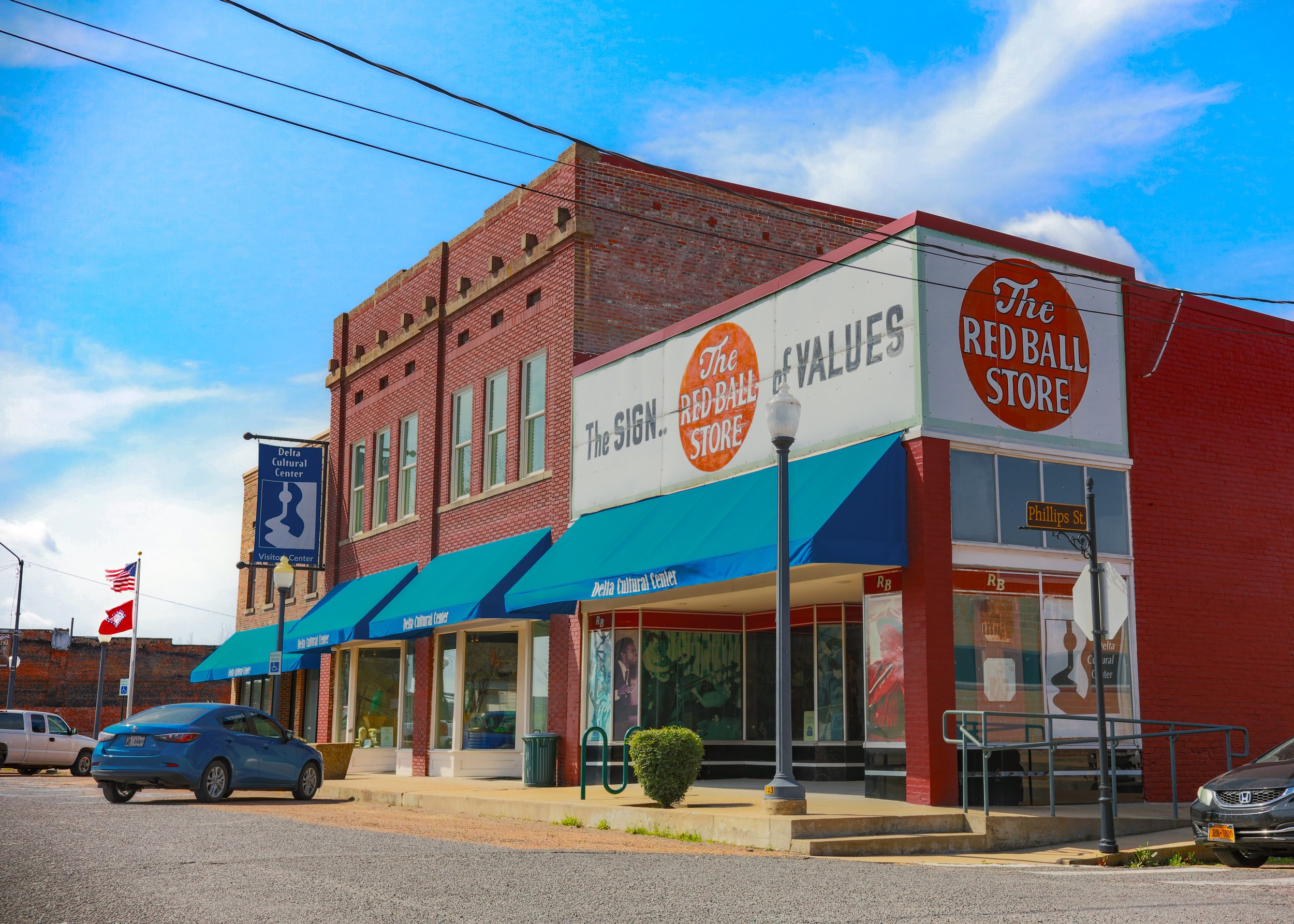
Helena, Arkansas
Historic Downtown
Court Square Park
Come enjoy our state-of-the-art Splash Park, explore the region’s past, and make some music in this beautiful community green space.
-
This ADA-accessible park features a self-filtering fountain with 33 water jets programmed to provide exciting and playful water bursts for the young and young-at-heart alike. The park also has trees and a pavilion, providing shade and outdoor seating for families to relax and enjoy the fresh air.
-
The Elaine Massacre was the deadliest racial conflict in Arkansas history, with its roots in the state’s tense race relations and growing concerns about labor unions following World War I. Although the exact number is unknown, estimates of the number of African Americans killed by whites have ranged into the hundreds; five white people lost their lives. This memorial hopes to be a place of remembrance and reflection on these tragic events.
-
This bronze statue commemorates Southland College (originally the Helena Orphan Asylum, then the Southland Institute), which was established in 1864 by Quaker missionaries from Indiana to render temporary relief to displaced African American children orphaned by the Civil War. It was the first institution of higher education for African Americans west of the Mississippi, which survived through six difficult and sometimes dangerous decades until its closure in 1925.
-
Discover the musical legends from our area, including Conway Twitty, Levon Helm, Sonny Boy Williamson and Rose Marie McCoy and make some music of your own with the interactive instruments.
-
Located in the NE corner of Court Square Park, this monument commemorates the expedition of Hernando de Soto and the first Christian service held west of the Mississippi River in 1541
-
A reproduction Civil War cannon accompanied by interpretive panels covering Phillips County’s seven Confederate soldiers
Levee Walk & Pavilion
Take in panoramic views of downtown Helena on one side and the Mississippi River on the other while learning more about Helena’s history.
-
Located at the southern end of the Levee Walk near the covered gazebo, this exhibit tells the story of the Indian Removal Act signed into law by President Andrew Jackson on May 28, 1830. Helena residents of the 1830s watched tens of thousands of Cherokee, Choctaw, Muscogee (Creek), and Chickasaw pass by as they traveled south on the Mississippi River. Unlike travel on the river today, during the time of the Indian Removal Act it was dangerous for a variety of reasons from sickness onboard and low river levels to fires and explosions on the steamboats.
-
The River Walk offers water access and views. The Mississippi River was the Trail of Tears Water Route and the boardwalk overlook offers a place to consider the boats passing by on their way to the Arkansas River and eventually, Indian Territory.
-
A shade structure perfect for taking a rest after the river walk, the pavilion is next to Civil War exhibits discussing the Battle of Helena, the Yazoo Pass Expedition, and changes Union occupation brought to Helena.
Kelly Courtyard
A charming pocket park located on Cherry Street, Kelly Courtyard is a common venue for photo sessions, small weddings, and parties.



